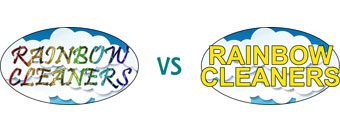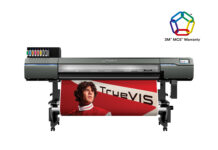How would you define the term “problem signage client”?
Let’s analyze that question in terms of an outdoor electric signage project involving channel letters.
Here are some of the potential issues that problem clients may cause for you and your company:
- They take an excessive amount of your time and attention—more than the project requires.
- During the project, they will cause an unusual amount of stress for both you and your staff.
- Their project provides little chance of any future work—this is probably the only location for which this sign will be produced.
- They are inflexible regarding their artwork/logo appearance—it must look “exactly like it does on this page.”
This is certainly not a client with whom you would be eager to do business, but nevertheless, some signage companies go through the negative and time-consuming experience of working with them.
A superior business practice is to use a procedure to spot the problem client in advance and skip the entire ordeal.
By the way, nothing is inherently wrong with a potential client not knowing the realities of your line of work. A client’s lack of signage knowledge is, in itself, not a negative.
However a client who insists on projecting their own lack of understanding onto you and your staff may quickly become an issue. These problematic customers are a different type of client than those who respect your competence and leave you alone to perform the installation.
So which items should you consider during your profiling of a potential new signage client? Here are a few ideas.
Prior Signage Experience
First does your potential new client have any prior signage experience?
This question is not asking if the client has previously worked in the signage industry. Rather it asks whether this customer has previously had a formal outdoor electric sign produced and installed.
Obviously the client who has that previous experience is beneficial to you. Such a customer has a better idea of what is involved in an outdoor electric signage project.
However the lack of that experience can be a red flag, as this type of customer sometimes has no idea how much time and work is involved with fabricating and installing a channel letter set. Some are not even aware that such an installation typically requires a permit.
Worse some will lump other signage types together as an example of how much time they believe the project should take (i.e., “our window signs didn’t take that long”). This person clearly has a rose-colored vision of the work involved with a professional outdoor electric signage project.
Be wary of the “this is our first outdoor sign” client. They may have unrealistic expectations regarding the cost, materials, and time frame involved with such a project.
Lack of Design Knowledge/Experience
Another potential problem area is the customer who has no knowledge of sign and/or logo design.
Just as customers can be naïve regarding how much work is involved with producing and installing a sign, they may be equally out of touch regarding the generation and use of a vector artwork signage file.
Furthermore the “first-timer” may assume that you will be supplying the artwork as a standard part of your services, which can be fine—provided that expectation is out on the table in advance and the client has been made aware of the additional cost. This also assumes you have a staff member who is capable of generating an appropriate design.
If you do have such a staff member, then of course, you take on the additional challenge of generating artwork that is acceptable to the client. This may involve multiple revisions, which adds on to the project timeline.
Finally the problematic sign customer may assume that a handwritten sketch on a piece of paper is a design “file,” and that once they have given you that paper, the design stage is complete. Ah, no.
Inappropriate Graphic File(s)
Some graphic files look fine in print but do not translate well to signage. Your potential client may not understand that.
For example, consider the client whose logo includes some other artistic element that makes it impractical to produce as a channel letter set because the resulting sign would be difficult to read. See Photo 1 pictured below: Which of these two designs would be more legible?

Another potential issue is a design featuring overlapping graphic elements. Again this design may have an interesting printed appearance but producing an actual letter set from it may not be feasible. It may be possible as a logo box but not as separate letters. And even then, as a logo box, it may still have legibility issues.
Then there is the customer whose logo may include a custom font that features letter strokes that are far too thin for use in a channel letter sign (which have minimum stroke widths). Do not accept the statement that “our logo is all set to go.”
The point is that your potential client may have permitted their graphic artist to design their artwork without consideration of the usage application(s). It may involve an odd shape, layered design elements, or some other complication that prohibits an easy translation into effective channel letter signage.
So even if the client assures you that “our file is ready,” insist on seeing it for yourself.
Potential Future Business
Another item to consider is the potential for future signage sales.
Is this a single location business or could they open additional location(s) in the future? Nothing is wrong with a single location business, but that reality (knowing this project has no potential for similar future sales) can compound the frustration of working with a problem signage client.
Such a client may still result in valuable referrals, which are always good.
However a far better situation (particularly if you choose to deal with a difficult, time-consuming client) is the possibility of multiple future installations of the same (or very similar) sign.
Several Layers of Decision Making
Yet another issue (sigh!) is the channel letter client who must go through multiple layers of decision-making to receive design approval.
If a committee must approve the design prior to production, you will soon have a new appreciation for the old saying that “a camel is a horse designed by a committee.”
A similar situation is the potential new client who has an equally inexperienced colleague or spouse who insists on participating in the design process. What is acceptable to one person may not please the other, and this may lead to an ever-changing sign design or even project delays.
Budget Statement
Another potential red flag is the client who will not state a signage project budget in advance.
A client’s unwillingness to state a project budget is never a good omen. It often means that their actual budget is far less than what the sign in question would cost.
This again goes back to experience and knowledge.
A person who is quoting an outdoor electric sign for the first time may have a misguided perception of the amount of time, labor, and expense involved with such a project. That misperception may carry over to their project cost expectation.
Asking Questions
So what can you do to spot and bypass the problem signage client?
Protect yourself by asking them a few helpful questions in advance:
- Is your new sign already designed?
- (If “no” to Question #1): Who will design the sign?
- (If “no” to Question #1): Are you the only person who must approve the design?
- (If “no” to Question #3): Who else must approve the design?
- (If “yes” to Question #1): May I see the design file?
- (If “yes” to Question #5): Who designed this sign?
- Is this the first time this sign has been produced, or has it already been installed at another location?
- What is your budget for this particular project?
- What is your timetable to have this sign project completed?
- Do you have a grand opening date by which the project will need to be completed?
- Is this the only location for which this sign will be needed?
Watch for the “red flags” as you ask those questions. A problem signage client may cost you far more (in time, headaches, staff morale, etc.) than you would make from the project. It is better to pass it by.
By John Baylis, the marketing director at Direct Sign Wholesale in Denver, Colorado.
Photos (top to bottom):











